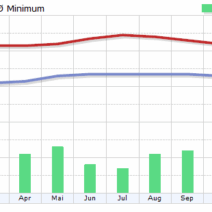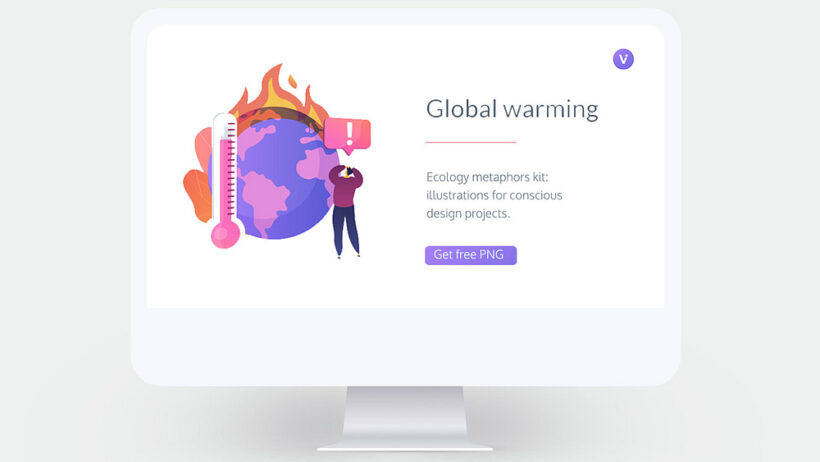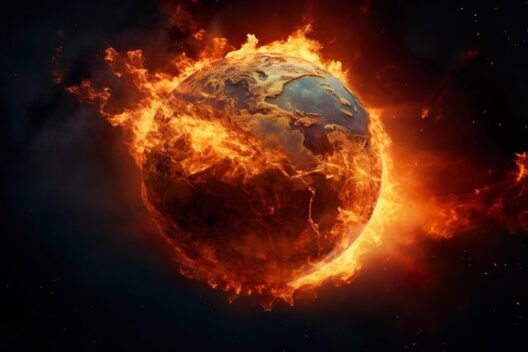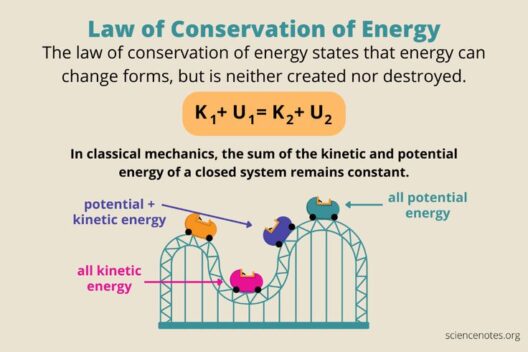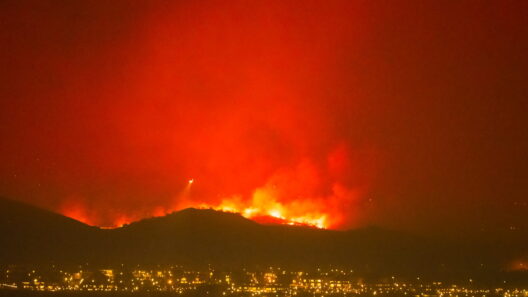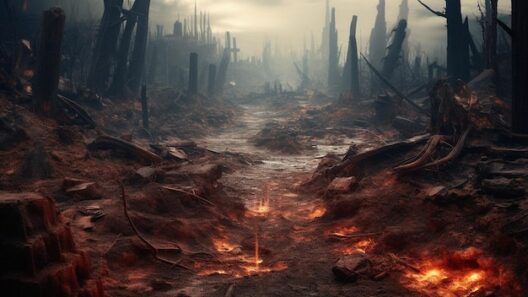In December 2021, the satirical film “Don’t Look Up,” directed by Adam McKay, was released, garnering attention for its comedic portrayal of humanity’s inability to heed existential threats. While many viewed it as a sharp critique of contemporary political apathy, beneath its humorous facade lies a profound metaphor for the urgency of climate change. This cinematic narrative does not merely entertain; it serves as a poignant allegory for the disconnect between scientific warnings and collective action. In exploring the multifaceted dimensions of this metaphor, it becomes apparent how “Don’t Look Up” encapsulates the climate crisis in a manner that prompts a paradigm shift in our understanding of global warming.
At its core, the film presents a startling scenario: a comet on a collision course with Earth. Scientists, well-versed in the implications of this cataclysmic threat, attempt to warn a disinterested populace. This scenario mirrors the persistent warnings from climate scientists regarding the dire consequences of unchecked greenhouse gas emissions. Just as the protagonists—Dr. Randall Mindy and Kate Dibiasky—struggle to get their message across, climate activists face formidable obstacles in capturing the public’s attention. The metaphor illuminates the perennial challenge of communication in the face of an impending catastrophe.
The phrase “Don’t Look Up” itself embodies the societal tendency to ignore dire warnings. In the film, the command serves as both a literal injunction and a symbolic representation of denial. Much like the surreal reality of climate change, where rising temperatures and extreme weather events are met with skepticism or indifference, the insistence of authorities to divert attention away from the looming disaster echoes the behavior exhibited by many in society today. This disconnection between reality and public perception emphasizes the necessity for a collective awakening—a reevaluation of priorities that compels individuals to confront the undeniable truths of global warming.
Moreover, McKay’s film underscores the role of misinformation in shaping public discourse. The comet, a straightforward, unequivocal threat, becomes a subject of politicization, sensationalism, and trivialization throughout the film. This phenomenon mirrors the cavalcade of misinformation prevalent in the realm of climate change. Politicization of scientific evidence often serves to dilute the message rather than elevate it, fostering confusion and apathy. The film’s depiction of a distracted society captivated by sensational news cycles and entertainment rather than the imminent threat from above reflects a critical truth about our current environmental discourse. To effect meaningful change, it is imperative to prioritize scientific literacy and navigate through the haze of misinformation that permeates discussions about global warming.
In a world rife with disillusionment and apathetic responses to climate change, “Don’t Look Up” demands a radical reorientation of our perspective. The film compels viewers to acknowledge not just the threat posed by climate change but also our complicity in its perpetuation. By portraying characters who struggle to instigate action against an evident threat, the audience is nudged into self-reflection. Are we not also resisting the call to action against climate change? The sometimes humorous, often painful inquiries posed in the film encourage a deeper examination of our own behaviors and attitudes towards environmental stewardship.
As the characters grapple with the implications of the comet’s impact, the audience is made acutely aware of the psychological mechanisms that underlie denial. Cognitive dissonance, a state where conflicting beliefs coexist, often results in individuals downplaying the urgency of ecological crises. “Don’t Look Up” methodically illustrates this phenomenon, highlighting how fear and uncertainty can breed paralysis rather than proactive engagement. Understanding these psychological barriers is paramount in cultivating an informed and mobilized citizenry ready to address the climate crisis head-on.
Furthermore, the film serves as a clarion call for interdisciplinary collaboration in combating climate change. Just as Dr. Mindy and Dibiasky enlist the help of various sectors—government officials, media outlets, and scientific communities—to convey their message, an effective climate action movement necessitates cooperation across diverse fields. This includes policymakers, researchers, educators, and community leaders aligning their strategies towards fostering sustainability. Only through a collective approach can effective solutions emerge from the cacophony of opinion surrounding climate action, propelling society toward a more resilient future.
Additionally, “Don’t Look Up” elucidates the importance of urgency in communication. Scientists, activists, and leaders must learn to convey the importance of environmental action through resonant language and relatable narratives. The film demonstrates that communication infused with emotion transcends mere facts and figures; it appeals to the humanity in all of us. Engaging storytelling can provoke empathy and spur action, making the abstract reality of climate change feel immediate and tangible. By harnessing the power of narrative, we can inspire collective action and dismantle apathy.
The film concludes on a disheartening note, revealing the futility of indifference in the face of an overwhelming crisis. The allegorical nature of “Don’t Look Up” reveals an uncomfortable truth: without immediate and concerted efforts to curb climate change, humanity may face irreversible consequences. This serves as an empowering reminder that the power of change resides in our hands. Understanding and confronting the complexities of global warming—like the characters of the film ultimately realize—requires not just awareness, but a commitment to action.
In conclusion, “Don’t Look Up” emerges as a powerful metaphor for the climate crisis, calling into question our societal complacency and urging a critical reassessment of our values. By recognizing the narrative’s relevance to our reality, we can foster a collective sense of responsibility and urgency. The film challenges us to “look up” and confront the existential threats lurking in our lives, motivating individuals to become stewards of the environment. As we embark on this journey, let curiosity and determination guide us towards a sustainable future.

